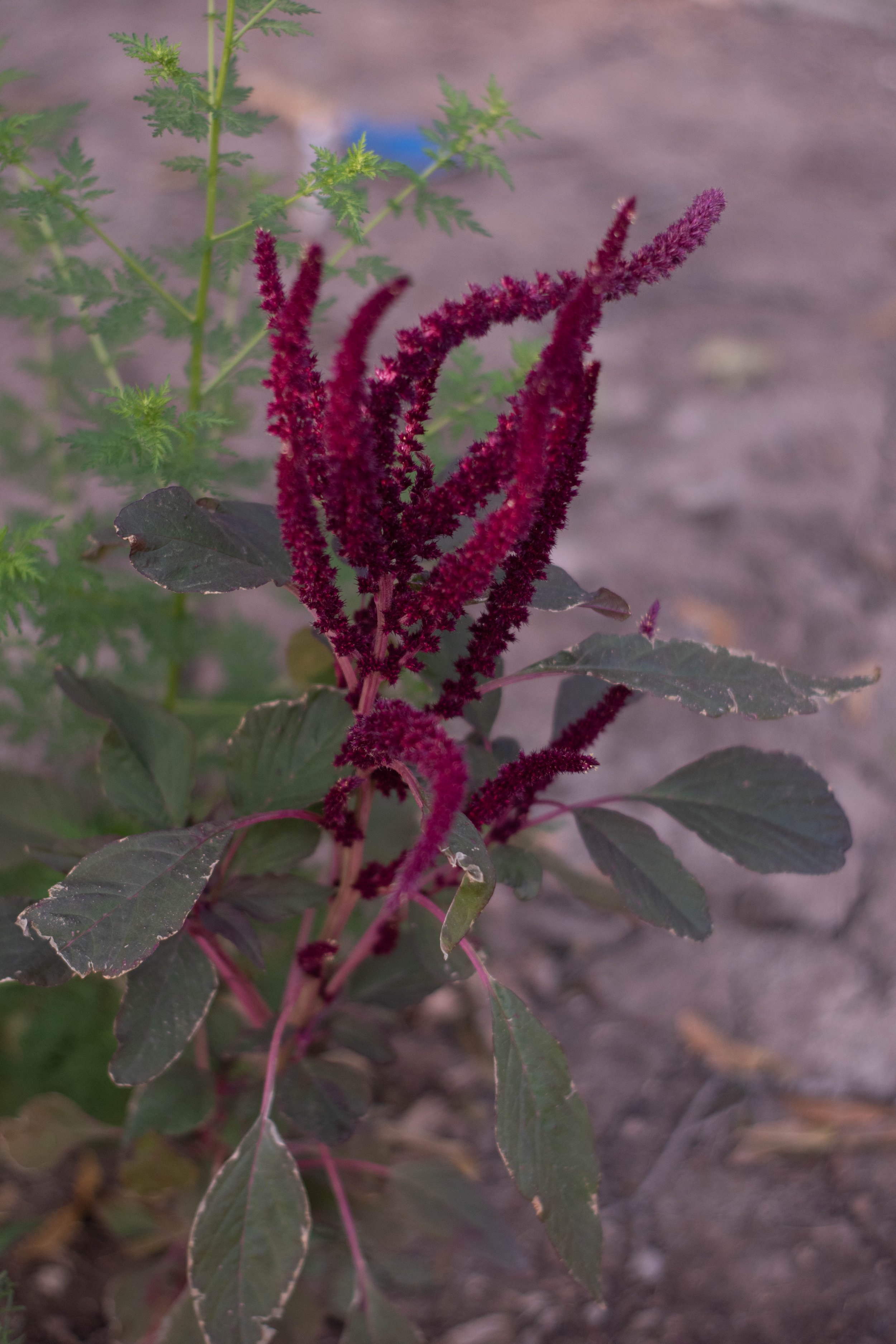 Image 1 of
Image 1 of


Amaranth 'Love Lies Bleeding'
Grown for its crimson color and feathery texture, no foliage makes a statement quite the way amaranth does. Its velvet-like texture and deep red color make for a striking combination that adds flair to gardens and arrangements alike.
Seed Count: approximately 50 seeds
Plant Height: 3-4’
Light Requirements: full sun, part sun
Soil Preference: regular, well-drained soil
USDA Zones: 2-10 (annual)
How to Grow
Germination: 5-14 days at 65-75F
Seeding Depth: 1/16” depth, light required for germination
Plant Spacing: 2-3’
Days to Maturity: 80-100 days
Early-Season Seeding: Start seed indoors 6 weeks before the last frost date, transplant after the danger of frost has passed. Direct seed outdoors after the last frost date or when soil temperature is above 65F.
Late-Season Seeding: Start seed indoors or direct seed outdoors at least 12 weeks before the first frost date.
Growing Tips: Plants may require a trellis to support growth in windy areas. Plants are fairly drought tolerant so overly wet soils may result in disease problems.
Cut Flower: Harvest when ½ - ¾ of the florets are open. Can be dried if hung upside down in a dark cool place for a few weeks.
Grown for its crimson color and feathery texture, no foliage makes a statement quite the way amaranth does. Its velvet-like texture and deep red color make for a striking combination that adds flair to gardens and arrangements alike.
Seed Count: approximately 50 seeds
Plant Height: 3-4’
Light Requirements: full sun, part sun
Soil Preference: regular, well-drained soil
USDA Zones: 2-10 (annual)
How to Grow
Germination: 5-14 days at 65-75F
Seeding Depth: 1/16” depth, light required for germination
Plant Spacing: 2-3’
Days to Maturity: 80-100 days
Early-Season Seeding: Start seed indoors 6 weeks before the last frost date, transplant after the danger of frost has passed. Direct seed outdoors after the last frost date or when soil temperature is above 65F.
Late-Season Seeding: Start seed indoors or direct seed outdoors at least 12 weeks before the first frost date.
Growing Tips: Plants may require a trellis to support growth in windy areas. Plants are fairly drought tolerant so overly wet soils may result in disease problems.
Cut Flower: Harvest when ½ - ¾ of the florets are open. Can be dried if hung upside down in a dark cool place for a few weeks.
Grown for its crimson color and feathery texture, no foliage makes a statement quite the way amaranth does. Its velvet-like texture and deep red color make for a striking combination that adds flair to gardens and arrangements alike.
Seed Count: approximately 50 seeds
Plant Height: 3-4’
Light Requirements: full sun, part sun
Soil Preference: regular, well-drained soil
USDA Zones: 2-10 (annual)
How to Grow
Germination: 5-14 days at 65-75F
Seeding Depth: 1/16” depth, light required for germination
Plant Spacing: 2-3’
Days to Maturity: 80-100 days
Early-Season Seeding: Start seed indoors 6 weeks before the last frost date, transplant after the danger of frost has passed. Direct seed outdoors after the last frost date or when soil temperature is above 65F.
Late-Season Seeding: Start seed indoors or direct seed outdoors at least 12 weeks before the first frost date.
Growing Tips: Plants may require a trellis to support growth in windy areas. Plants are fairly drought tolerant so overly wet soils may result in disease problems.
Cut Flower: Harvest when ½ - ¾ of the florets are open. Can be dried if hung upside down in a dark cool place for a few weeks.